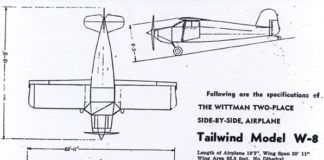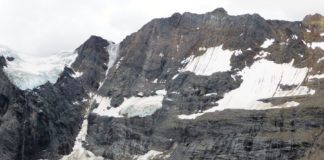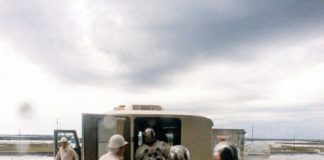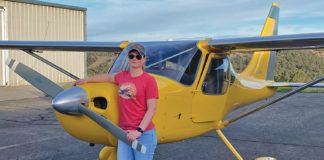The May 2008 edition of this column revealed my impressions of my neighbors Flight Design CTSW (short wing), which to date is the best-selling factory-built Light Sport Aircraft (SLSA). I made it clear then that the experience was somewhat surprising, primarily due to the unexpected control sensitivity, especially in the yaw axis. Now there is a new model, the CTLS (Light Sport).
The original CTSW is, overall, a wonderful little airplane, and my guess is that buyers who lined up to own it are delighted with their purchases. But learning to fly the CTSW competently and confidently has required more than a few trips around the traffic pattern. In fact, Flight Design and pilot insurers (Avemco, for one) require a minimum of 5 hours and a CFI signoff to fly a CT as pilot in command. The need for an adequate checkout and supervised practice has been confirmed at least as much for high-time pilots as for beginners.
A Bit of Background
Flight Design, established in Germany by hang glider and paraglider instructor Matthias Betsch in 1988, was originally a major force in design and manufacture of paragliders, those graceful looking, high-aspect-ratio backpack parachute flying machines. Betsch and his company, however, became interested in light fixed-wing airplanes, and first work began in 1994 on what became the all-composite, state-of-the-art, high-wing two-seat CT.
The CT was certified in Germany in its European ultralight category in 1997, and in most of Europe by 1999. Slight modifications allowed the CT to qualify for the new Special Light Sport Aircraft (SLSA) category in the U.S., where the FAA first licensed it in 2005. Buyers have beaten a path to Flight Design USA in South Woodstock, Connecticut, ever since.
Whats the Same?
From a distance, both CT models may appear identical. Unless the two are side by side, you could easily overlook the new LSs longer tail arm. But wing area, aspect ratio, fuel capacity, standard BRS ballistic chute and the 100-horsepower Rotax 912S power are identical. Empty weight varies significantly: At 770 pounds, the LS weighs 121 pounds more than the SW. All but 35 pounds, however, is because of the larger standard package of avionics and other features.
SW and LS Differences
First produced in 2007 and certified by the FAA in time for displaying and flying at the Sebring, Florida (Light Sport) Expo in January this year, the CTLS embodies changes that make it easier to fly.
I flew with John Hurst, who represents Sebring (Florida) Aviation, which sells and maintains the CT line. He began with a description of first-flight problems that pilots experience with the CTs and particularly the original SW version.
The SW is the Corvette, he said, and the LS is the Cadillac of the line. The CTs are different, partly because they have a much better view over the nose than most other single-engine airplanes. That means less-obvious pitch reference, and some pilots (including me) took some minutes to become accustomed to it. Pilots perceive being lower than they actually are, Hurst explained. In a CT you see a lot more horizon, which is why you found yourself climbing in your turns. Also, with a wide cabin as in the CTs, the pilot is sitting as much as 10 inches farther left than usual in, for example, a Cessna 150. All of this means you need a good thorough checkout in a CT. Neither person is sitting near the centerline, he said. Actually, you sit in about the same spot as in a Cirrus.
Another training issue that relates to the original SW version, Hurst said, is that it is a short-field airplane with a high-lift wing. It is designed to lose energy quickly when the nose is raised. So you need to make sure you don’t flare too high. A few low-time CTSW pilots have managed to break the landing gear.
How does the new LS model differ? One significant point is that the LS has 14 inches more tailcone length. The LS is designed to be much more forgiving, although it might need another 200 feet of runway to land. Hurst said. The new composite gear on the LS is also designed to straighten a bumpy landing. The LS gear is designed to absorb energy rather than springing you back in the air after a bumpy touchdown. The problem [with landing-gear failures in the SW] was inadequate pilot checkout, and we now include and require 5 hours of checkout. Landing hard and sideways because you are sitting well to one side can pop the wheel off the airplane. The NTSB found no structural problems, Hurst said.
Other CTLS changes are winglet fuel vents, lockable storage plus a hat shelf, standard oil and water thermostats, different stabilator trimtab gearing and a new engine airbox that reduces noise in the cockpit.
Lets Go Flying
In the first few moments of flying the CTLS, I knew that this model would be easier to master than the CTSW. Controls in both versions provide relatively snappy response, but the LS offers better balance between ailerons and rudder. Initiating a bank or unbank, similar pressures on the stick and the rudder pedals result in nicely coordinated maneuvering. In the LS, I did not over-control the nearly full-deflection aileron and rudder inputs for the beginning of the roll rate check. The result: Banked 45 and rolling to the other 45 bank took just over 2 seconds at cruise speed. Thats a really snappy roll rate for an airplane of this size and weight.
Maybe the sight picture from my SW cockpit time prepared me for the view in a well executed level turn in the LS. In any case, pitch attitude in climbs, descents, steep turns, and straight and level were no problem. Negative and positive pitch stability checks (hands off the stick) damped in one slow cycle. Thats good.
Full power level at 3000 feet took us to about 120 knots indicated (the maximum LSA allows). For slow flight, we decelerated to the white arc-80 knots-for flap deflection and then flew comfortably at less than 50 knots. As in the CTSW, flying the LS requires paying attention to electric flap settings as airspeed changes. There’s a reflex position (6 up) for high-speed cruise and settings at 15, 30 and 35 flaps-down for steepening approaches.
Hurst demonstrated maintaining full back stick in slow-flight mode-without inducing a stall break. At idle, the mushing descent was about 1100 fpm. Neither the nose nor either wing dropped. Even stick-stirring and other uncoordinated thrashing did not result in a stall break. He simply added power to get out of mush mode. The nose never dipped far below the horizon during the thrashing.
The optional TruTrak two-axis CT autopilot (a $5277 option) features speed, altitude and heading hold plus homing.
The quiet cockpit is roomy and has map pockets and other storage. And while returning to Sebring, we listened briefly to the built-in XM Satellite radio. Nice!
The LS Package
The CTLS base package price-$124,800 plus a $6000 dollar/euro penalty at this writing-appears to be far above the $101,390 CTSW base price. But the LS standard equipment includes Dynon dual flat-panel EFIS and other displays, a Garmin com/496 GPS nav/transponder package plus night lighting outside and inside. Thats in addition to the lengthy list of CTSW standard equipment. The SW, by the way, remains available.
The CTLS really was designed for the U.S. Light Sport market. Any active, competent GA pilot should soon feel at home in the cockpit. But don’t count on skipping the 5-hour checkout. Besides, you would enjoy it.
For more information, call 860/963-7272, or visit http://www.flightdesignusa.com.
Dave Martin served as editor of this magazine for 17 years and began aviation journalism evaluating ultralights in the early 80s. A former CFI (airplanes, gliders, instruments), hes flown more than 160 aircraft types plus 60 ultralights (including a single-seat, no-basket hot air balloon). Now living at a residential airpark in Oregon, he flies his Spacewalker II homebuilt as a Sport Pilot.




